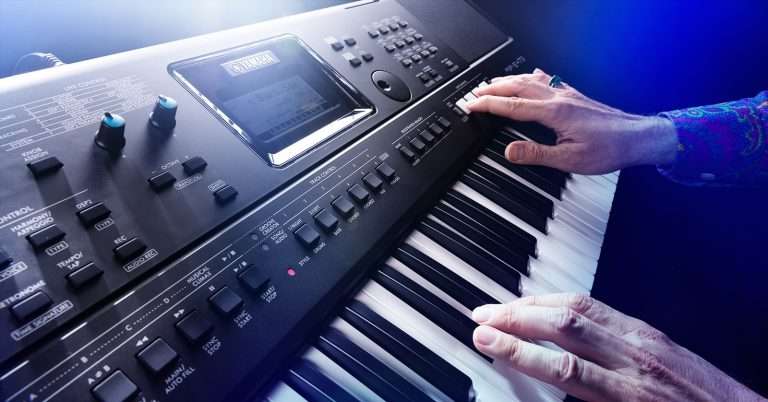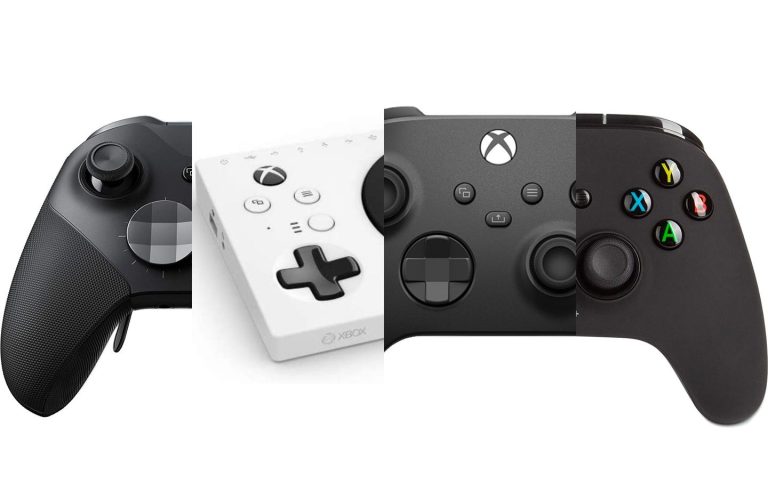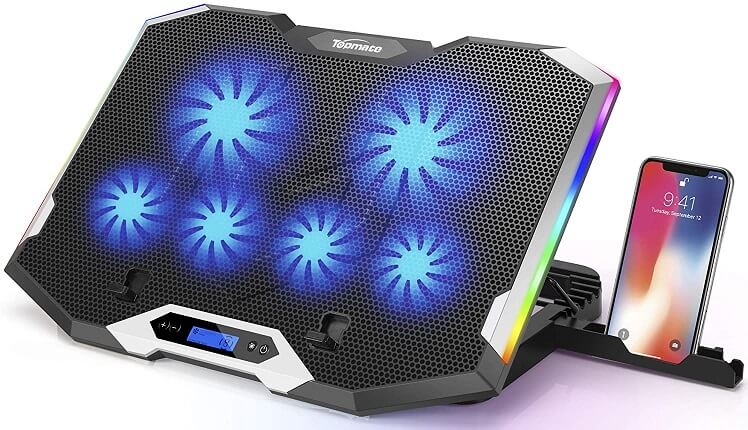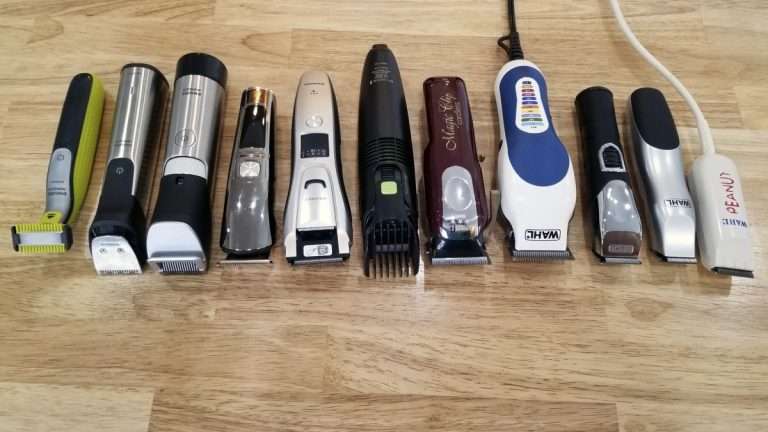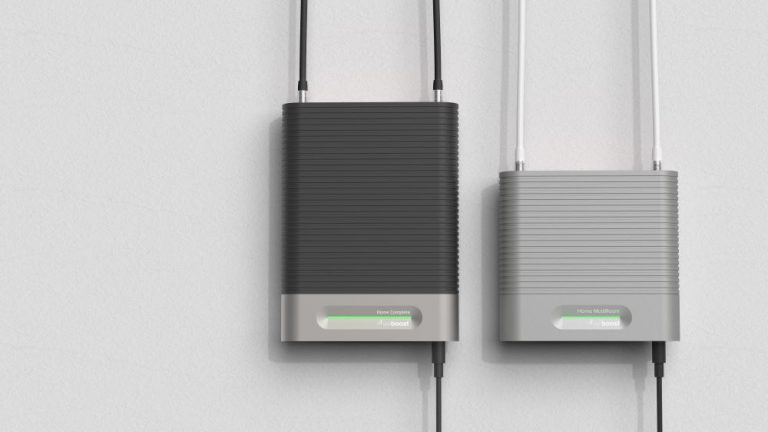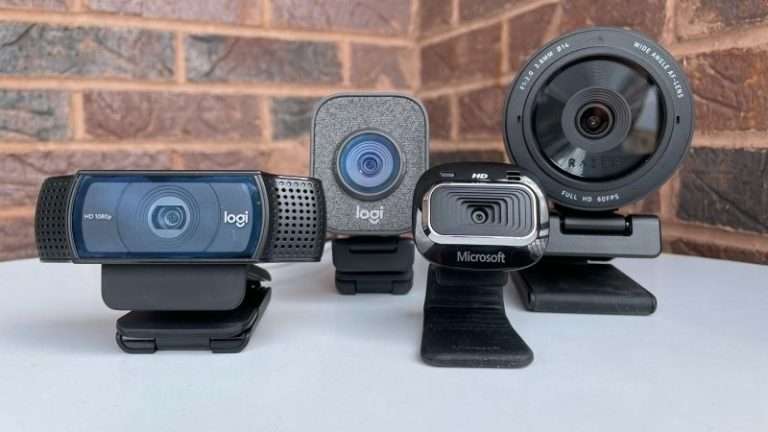Top 10 Best 3D Scanners 2024
Join the numerous customers who have relied on Consumers Voice to help them make smarter purchasing decisions. Our experts will assist you in selecting the best one for your requirements. Find the ideal 3D Scanners for you with the aid of our unbiased professional evaluations and data-driven buying suggestions.
Revopoint RANGE 2 3D Scanner for 3D Printing Handheld,
- Create accurate 3D models of large objects every time with RANGE 2's reliable single-frame precision of up to 0.1 mm.
- IMU stabilization and smart algorithms help you avoid faulty frames from unsteady hands and provide smoother frame stitching.
- Swiftly 3D scan automobiles, large machinery or components, furniture.
- Make color-accurate 3D models with RANGE 2's upgraded RGB camera and new Flash LED lighting system, ensuring evenly lit objects for balanced color capture.
- Save time and enhance workflow productivity with up to 16 fps scanning speeds and a larger capture area, powering the rapid capture of big objects.
Creality CR-Scan Ferret Pro 3D Scanner for 3D Printing Modeling Fast Scan with 0.1mm Accuracy
- The Creality CR-Scan Ferret Pro 3D Scanner boasts revolutionary anti-shake tech, countering hand tremors in 3D scanning.
- It guarantees precision even with unsteady hands.
- Traditional shaky-hand issues leading to inaccurate models are eliminated.
- Ideal for precision-demanding sectors like engineering, design, and healthcare.
- It employs real-time stabilization to counter hand movements, ensuring seamless and precise scans, making it invaluable for accuracy-driven professionals and enthusiasts.
Creality CR-Scan Ferret Pro 3D Scanner for 3D Printing Modeling Fast Scan with 0.1mm Accuracy
- The Creality CR-Scan Ferret Pro 3D Scanner boasts revolutionary anti-shake tech, countering hand tremors in 3D scanning.
- It guarantees precision even with unsteady hands.
- Traditional shaky-hand issues leading to inaccurate models are eliminated.
- Ideal for precision-demanding sectors like engineering, design, and healthcare.
- It employs real-time stabilization to counter hand movements, ensuring seamless and precise scans, making it invaluable for accuracy-driven professionals and enthusiasts.
Creality 3D Scanner CR-Scan Raptor for 3D Printing
- The First Multiple-line Blue & NIR Consumer 3D Scanner.
- Creality CR-Scan Raptor Scanner integrates an innovative combination of blue infrared light sources, covering scanning of small, medium, and large objects
- High-Speed Scanning: Raptor scanner blue light scanning speed up to 60fps.
- Raptor Scanner Equipped with One-Shot 3D imaging technology, it is naturally stabilized and less likely totracking loss.
- Fast backtracking speed ensures smoother handheld scanning,Scanning speed up to 20 fps.
Creality K1C 3D Printer, 2024 New Version 600mm/s High-Speed Auto Leveling Clog-Free Robust Direct Extruder K1 Upgrade 3D Printer
- K1C 3D Printer inherits the lightweight and agile CoreXY system of K1, Max 600mm/s speed and 20000mm/s² acceleration.
- It can maintain print quality while printing at high speed, it is 12 times faster than the other normal 3d printer.
- Creality K1C is an upgraded version of K1, K1 SE and K1 Max.
- It has more powerful functions and supports printing carbon fiber filaments. K1C 3d printer equips a clog-free robust direct extrude, enhanced with a bolster spring and a ball plunger.
- It forms a strong grip, enhanced reliability that won't slacken off.
Revopoint MIRACO Pro 3D Scanner for 3D Printing Handheld
- 3D scan and edit your models all on one portable 3D scanner, no cables or PC are needed.
- Transfer your 3D models to a macOS or Windows PC in PLY, OBJ, STL, ASC, 3MF, GLTF, FBX over MIRACO's lightning-fast Wi-Fi 6 or Type USB-C connections.
- Create richly detailed with photorealistic textures 3D models ready for 3D modeling.
- Capture small to large objects without swapping 3D scanners using MIRACO's innovative quad-Depth Camera system.
- Use Near-mode to capture fine details, then switch mid-scan to Far-mode to capture large surface areas quickly.
Creality 3D Scanner CR-Scan Ferret 3D Scanner
- Creality ferret scanner is high quality at an affordable price.
- It is the best choice for 3D scanners, leading you to a magical and wonderful scanning journey.
- CR-Scan Ferret provides two modes of wide range and high precision, which can be selected according to specific scanning needs.
- Unlike other scanners, the scan frame rate of the upgrade ferret scanner is up to 30FPT, improving the scanning fluency.
- Optimal scan results require high-configuration devices whose computing power influences the actual rate.
Einstar 3D Handheld Infrared VCSEL Structured Light Scanner
- Equipped with 3 Infrared VCSEL Projectors, 2 Stereo Depth Cameras and 1 RGB Camera.
- Easily capture stable and clear details at a fast pace up to 14 fps with high quality data outputs.
- Built-in detail enhancement technology optimizes the point cloud for complete data acquisition.
- Most affordable 3D Handheld Scanner for getting 0.1 mm point distance high quality data results. For both Indoor and Outdoor scanning.
- Support multiple data format outputs OBJ, STL, PLY, ASC, 3MF, P3, compatible with 3D printers and 3D design softwares.
[2024 Upgrade] Revopoint Mini 2 3D Scanner for 3D Printing Handheld
- Due to MINI 2's blue light technology, scanning results may vary based on the material and color of the scanned object.
- We recommend using scanning spray as an aid during scanning for improved results.
- Effortlessly capture tiny intricate details using the Revopoint MINI 2 3D scanner's industrial-grade blue light technology.
- Class 1 blue light is 100% skin-safe, but you may feel minor discomfort if it shines directly into your eyes.
- The MINI 2 offers a larger single capture range of up to 168 x 132 mm for improved tracking and scanning of larger objects.
Shining 3D Einstar Handheld 3D Scanner with Detail-Oriented Enhancement
- Einstar 3D scanners collect high density point cloud data fast and easily with point distance up to 0.1mm.
- Benefit from built-in RGB color camera, user can capture high color fidelity 3D data.
- Built-in detail enhancement technology optimizes the point cloud for complete data acquisition.
- Data quality indicator turn on to better guide the scanning and improve the data quality.
- EXstar software with Intelligent algorithm provide automatic alignment function and strengthen smart tracking performance.
Our Top 3 3D Scanners

- Create accurate 3D models of large objects every time with RANGE 2's reliable single-frame precision of up to 0.1 mm.
- IMU stabilization and smart algorithms help you avoid faulty frames from unsteady hands and provide smoother frame stitching.
- Swiftly 3D scan automobiles, large machinery or components, furniture.
- Make color-accurate 3D models with RANGE 2's upgraded RGB camera and new Flash LED lighting system, ensuring evenly lit objects for balanced color capture.
- Save time and enhance workflow productivity with up to 16 fps scanning speeds and a larger capture area, powering the rapid capture of big objects.

- The Creality CR-Scan Ferret Pro 3D Scanner boasts revolutionary anti-shake tech, countering hand tremors in 3D scanning.
- It guarantees precision even with unsteady hands.
- Traditional shaky-hand issues leading to inaccurate models are eliminated.
- Ideal for precision-demanding sectors like engineering, design, and healthcare.
- It employs real-time stabilization to counter hand movements, ensuring seamless and precise scans, making it invaluable for accuracy-driven professionals and enthusiasts.

- The First Multiple-line Blue & NIR Consumer 3D Scanner.
- Creality CR-Scan Raptor Scanner integrates an innovative combination of blue infrared light sources, covering scanning of small, medium, and large objects
- High-Speed Scanning: Raptor scanner blue light scanning speed up to 60fps.
- Raptor Scanner Equipped with One-Shot 3D imaging technology, it is naturally stabilized and less likely totracking loss.
- Fast backtracking speed ensures smoother handheld scanning,Scanning speed up to 20 fps.
3D Scanners
3D scanning is a cutting-edge technology that has revolutionized industries ranging from manufacturing and healthcare to entertainment and education. By capturing the precise shape and dimensions of real-world objects, 3D scanners provide highly accurate digital models that can be used for everything from product design to virtual reality applications. Whether you’re a hobbyist or a professional, understanding how 3D scanners work and the different types available can help you make informed decisions when choosing the right scanner for your needs.
This article will explore the technology behind 3D scanners, their various applications, the types of scanners available, and what to consider when selecting one.
What is a 3D Scanner?
A 3D scanner is a device that captures the physical shape, size, and texture of an object and creates a digital 3D model. These scanners use various technologies to collect data, such as laser triangulation, structured light, and photogrammetry. The resulting 3D models are typically used in CAD (Computer-Aided Design), 3D printing, digital animation, or virtual simulations.
The process works by measuring the geometry of the object from multiple angles and then compiling the data points (often called a “point cloud”) into a cohesive, high-resolution digital representation. Depending on the scanner type and application, this process can be fast or intricate and detailed, capable of producing models with micrometer-level precision.
Types of 3D Scanners
3D scanners come in different forms, each with its own advantages and use cases. Here are the most common types of 3D scanners:
1. Laser 3D Scanners
Laser scanners project a laser beam onto the surface of an object and measure the distance between the scanner and the object by capturing the reflection. These scanners can create highly accurate 3D models with fine detail and are frequently used in industrial design, quality control, and reverse engineering.
- Pros: High accuracy, capable of scanning small details, fast data collection
- Cons: Often expensive, sensitive to light conditions and reflective surfaces
Examples include the FARO Focus S and the Creaform HandySCAN 3D.
2. Structured Light 3D Scanners
Structured light scanners project a pattern of light onto an object and then analyze how the pattern deforms to determine the shape of the object. This technique captures detailed data quickly and is commonly used in fields like dentistry, product design, and video game development.
- Pros: Fast scanning process, good accuracy, works well for medium-sized objects
- Cons: Challenging to scan dark or shiny objects, requires controlled lighting conditions
Popular models include the Artec Eva and Shining 3D EinScan-Pro HD.
3. Photogrammetry
Photogrammetry involves taking multiple 2D photographs of an object from different angles and using software to reconstruct a 3D model from those images. While it doesn’t require specialized hardware and can be done with a standard camera, photogrammetry can produce detailed models but is generally less precise than laser or structured light scanners.
- Pros: Inexpensive, no need for specialized hardware, good for large objects and landscapes
- Cons: Requires powerful software and computing power, time-consuming, lower accuracy
A good example of software for photogrammetry is Agisoft Metashape.
4. Handheld 3D Scanners
Handheld 3D scanners offer flexibility and portability, allowing users to scan objects in difficult-to-reach places or in the field. These scanners can use laser or structured light technology and are ideal for tasks like archaeology, product inspection, and medical prosthetics.
- Pros: Portable, easy to use, ideal for scanning hard-to-reach areas
- Cons: May not be as accurate as fixed 3D scanners, smaller scanning volume
Examples include the Creaform Go!SCAN SPARK and Artec Leo.
5. Desktop 3D Scanners
Desktop 3D scanners are often used for scanning small to medium-sized objects with high precision, making them ideal for detailed work such as jewelry design, dentistry, and small-scale manufacturing. These scanners are fixed in place and typically have an automated scanning process.
- Pros: High accuracy, ideal for small objects, often comes with user-friendly software
- Cons: Limited to smaller objects, not portable
Popular models include the Shining 3D AutoScan Inspec and Matter and Form 3D Scanner V2.
6. Industrial 3D Scanners
Industrial 3D scanners are large, high-precision devices designed for scanning large objects like cars, engines, or even entire buildings. They are used in industries such as automotive, aerospace, and civil engineering. These scanners are typically very expensive and are often used in combination with CAD systems for reverse engineering or quality assurance.
- Pros: Extremely high accuracy, suitable for large-scale objects
- Cons: Expensive, large and heavy, requires expert operation
Examples include the Hexagon Leica Absolute Tracker and Trimble TX8.
Applications of 3D Scanning Technology
3D scanning has transformed several industries, thanks to its ability to accurately digitize the real world. Here are some key applications:
1. Manufacturing and Quality Control
In manufacturing, 3D scanning is used to design products, reverse-engineer existing components, and ensure that parts meet strict specifications. Scanners can detect deviations from design blueprints, allowing manufacturers to maintain quality control.
2. Healthcare
3D scanning plays a crucial role in healthcare, particularly in prosthetics, dentistry, and surgery planning. By scanning a patient’s body, custom prosthetics or dental implants can be designed to fit perfectly. Scanning also helps surgeons plan and simulate complex surgeries before they operate.
3. Archaeology and Cultural Preservation
Archaeologists use 3D scanning to digitally preserve ancient artifacts, historical sites, and fossils. This technology allows for the study and reconstruction of objects without physically handling fragile or deteriorating materials. It also provides the ability to share and analyze data globally.
4. Entertainment and Gaming
The film and gaming industries rely on 3D scanning to create lifelike characters, environments, and objects for movies, video games, and virtual reality experiences. Scanning real-world objects allows artists to incorporate highly detailed and realistic elements into digital creations.
5. Architecture and Construction
In architecture and construction, 3D scanning is used to create accurate models of buildings, landscapes, and infrastructure. This helps in design planning, renovations, and documentation of existing structures.
Key Features to Consider When Choosing a 3D Scanner
When selecting a 3D scanner, several factors should be taken into account:
1. Accuracy
The level of accuracy you need depends on the application. For industrial use, highly accurate scanners that capture minute details are essential, while less accurate scanners might suffice for tasks like capturing simple shapes or large objects.
2. Resolution
Resolution refers to the smallest details the scanner can capture. Higher resolution is important for intricate objects with fine details, such as jewelry or medical applications.
3. Portability
If you need to scan objects in various locations, portability is crucial. Handheld and portable 3D scanners are ideal for fieldwork, while desktop or industrial scanners are best suited for controlled environments.
4. Scanning Speed
Speed is an important factor when working in high-demand environments, such as manufacturing or healthcare. Some scanners are designed to capture large amounts of data quickly, while others focus on detail and precision, requiring more time.
5. Software Compatibility
3D scanners typically come with their own software, but it’s important to ensure that the scanner you choose can integrate with your existing tools, such as CAD software or 3D printing systems. Some scanners also offer advanced post-processing software for refining the 3D models.
Conclusion
3D scanning technology is rapidly evolving and becoming more accessible across a wide range of industries. Whether you’re an industrial designer, healthcare professional, or hobbyist, there’s a 3D scanner suited for your needs. By understanding the different types of 3D scanners, their applications, and key features, you can choose the right tool to bring your ideas into the digital world.
As the technology continues to advance, 3D scanners are likely to become even more versatile, offering new possibilities for innovation and creativity in various fields.





![[2024 Upgrade] Revopoint Mini 2 3D Scanner for 3D Printing Handheld](https://m.media-amazon.com/images/I/313qGzDLXiL._SL500_.jpg)

